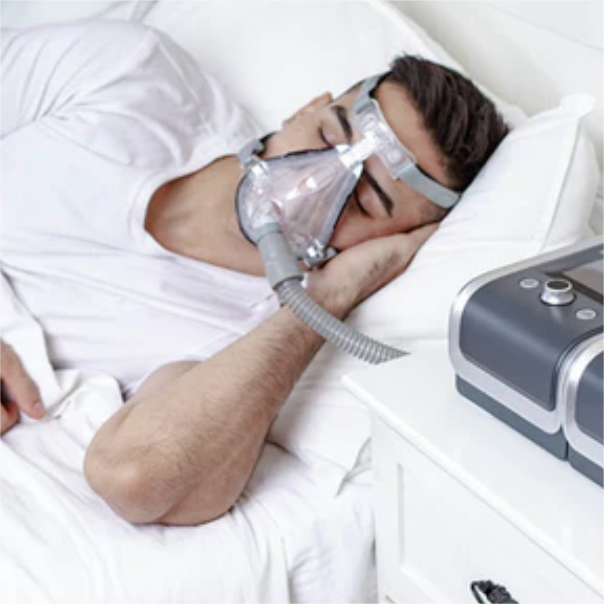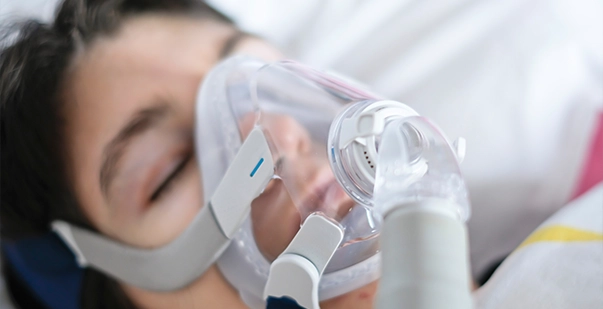Explore High-End BiPAP Rental Units at Competitive Rates
Explore High-End BiPAP Rental Units at Competitive Rates
Blog Article
Bipap vs. CPAP: Which Is the Best for Your Rest Condition?
When navigating the complexities of rest problems, the choice in between BiPAP and CPAP treatment is an essential factor to consider. Each technique uses one-of-a-kind benefits customized to certain conditions, yet the decision depends upon individual patient needs and convenience degrees. While CPAP supplies a stable air movement ideal for obstructive sleep apnea, BiPAP's dual stress setups might boost comfort for those with more complex respiratory issues. Comprehending these differences can substantially affect treatment efficiency, leaving one to consider which alternative absolutely lines up with their wellness needs and way of life.
Recognizing Rest Disorders
Sleep problems include a series of conditions that interrupt normal sleep patterns, influencing both the high quality and duration of remainder. These disorders can show up in various types, including sleep problems, sleep apnea, narcolepsy, restless leg syndrome, and parasomnias. Each problem offers distinct difficulties, often resulting in considerable daytime fatigue, cognitive disability, and emotional disruptions.
Sleeping disorders is defined by trouble falling or staying asleep, while rest apnea involves repeated disruptions in breathing throughout rest, typically bring about fragmented rest. Narcolepsy, on the other hand, is marked by too much daytime sleepiness and sudden sleep assaults. Troubled leg disorder creates awkward experiences in the legs, triggering an uncontrollable urge to move them, which can likewise impede the ability to drop asleep.
The influence of rest problems prolongs beyond private health and wellness, affecting general performance, connections, and high quality of life. Comprehending the certain nature of each condition is crucial for efficient medical diagnosis and therapy. As sleep health and wellness comes to be increasingly recognized as an important component of overall health, addressing these disorders is essential for boosting both rest top quality and daily functioning.
How CPAP Works
Continual Favorable Respiratory Tract Stress (CPAP) therapy is frequently utilized as a key therapy for obstructive sleep apnea (OSA) The mechanism of CPAP includes using a device that delivers a steady stream of air via a mask put on throughout sleep. This airflow keeps positive pressure in the respiratory tract, protecting against the collapse or blockage of the throat that can occur during sleep.
When a patient takes in, the CPAP maker provides a continuous circulation of air, guaranteeing that the airway stays open - BiPAP Rental. This not only minimizes the symptoms of OSA, such as snoring and interfered with sleep patterns, yet also reduces the associated health and wellness risks, consisting of cardiovascular complications and daytime exhaustion
The stress setups on a CPAP device can be personalized to fulfill individual patient requirements, typically determined with a rest research. Overall, CPAP therapy has actually been shown to considerably enhance the high quality of sleep and overall health for individuals experiencing from obstructive sleep apnea.
Exactly How BiPAP Works
BiPAP, or Bilevel Positive Airway Pressure, is a specialized type of non-invasive air flow that is specifically beneficial for people with problems such as complicated rest apnea or breathing problems. Unlike CPAP, which provides a constant stream of air at a single stress, BiPAP gives two unique stress settings: a greater inspiratory pressure for inhalation and a reduced expiratory stress for exhalation. This dual-pressure technique permits simpler breathing, decreasing the initiative required during exhalation.
The device runs via a mask fitted over the nose or mouth, linked to an equipment that generates atmospheric pressure. When the person inhales, the machine provides the greater pressure to help with air flow, making sure that the airway continues to be open. Upon exhalation, the machine instantly minimizes the pressure, making it much more comfy for the person to breathe out.

Secret Distinctions In Between BiPAP and CPAP

On the other hand, BiPAP (Bilevel Favorable Respiratory tract Pressure) uses 2 different stress settings: one for breathing and a lower one for learn this here now exhalation. This dual pressure system enables even more comfortable breathing, particularly for people who fight with exhaling against a continual pressure. BiPAP is typically advised for patients with complicated sleep apnea, persistent obstructive lung condition (COPD), or those who require additional assistance during sleep.
Furthermore, the intricacy of BiPAP devices usually leads to a greater expense and requires more cautious titration than CPAP. BiPAP Rental. Understanding these key distinctions can help in recognizing which gadget may be better for particular rest disorders, establishing the groundwork for educated therapy choices
Picking the Right Treatment
Exactly how can one figure out one of the most suitable therapy for handling rest problems? The choice between BiPAP and CPAP treatment largely rests continue reading this on the certain qualities of the sleep condition, the patient's total wellness, and their convenience with the gadget. CPAP, which provides a constant stream of air, is generally recommended for obstructive sleep apnea (OSA) It maintains an open respiratory tract during rest, effectively protecting against apneas and hypopneas.
Conversely, BiPAP gives 2 levels of stress: one for breathing and a reduced one for exhalation. This double stress system is useful for patients with complex rest apnea or those that experience difficulty exhaling versus a constant stress. Furthermore, BiPAP is frequently advised for people with respiratory system conditions, such as persistent obstructive pulmonary disease (COPD), where differing stress settings can boost comfort and conformity.
Eventually, an extensive examination by a rest expert, consisting of a rest research study, can aid identify which therapy lines up ideal with the client's demands. Variables such as comfort, convenience of use, and certain clinical conditions need to likewise be see thought about to enhance therapy outcomes.
Conclusion
In summary, both BiPAP and CPAP serve unique objectives in the management of rest conditions. CPAP is reliable for obstructive sleep apnea through consistent air flow, while BiPAP supplies twin pressure settings that enhance comfort for those with complex sleep apnea or breathing problems. The choice between these therapies ought to be directed by private needs and conditions, requiring a thorough assessment by a sleep specialist to guarantee optimal treatment results and enhanced quality of sleep.

Overall, CPAP treatment has been revealed to significantly improve the high quality of rest and overall wellness for individuals enduring from obstructive rest apnea.
BiPAP is frequently advised for clients with complicated rest apnea, persistent obstructive lung disease (COPD), or those that call for added assistance during rest.
CPAP is efficient for obstructive rest apnea through constant airflow, while BiPAP uses dual pressure settings that improve convenience for those with complicated sleep apnea or respiratory system problems.
Report this page